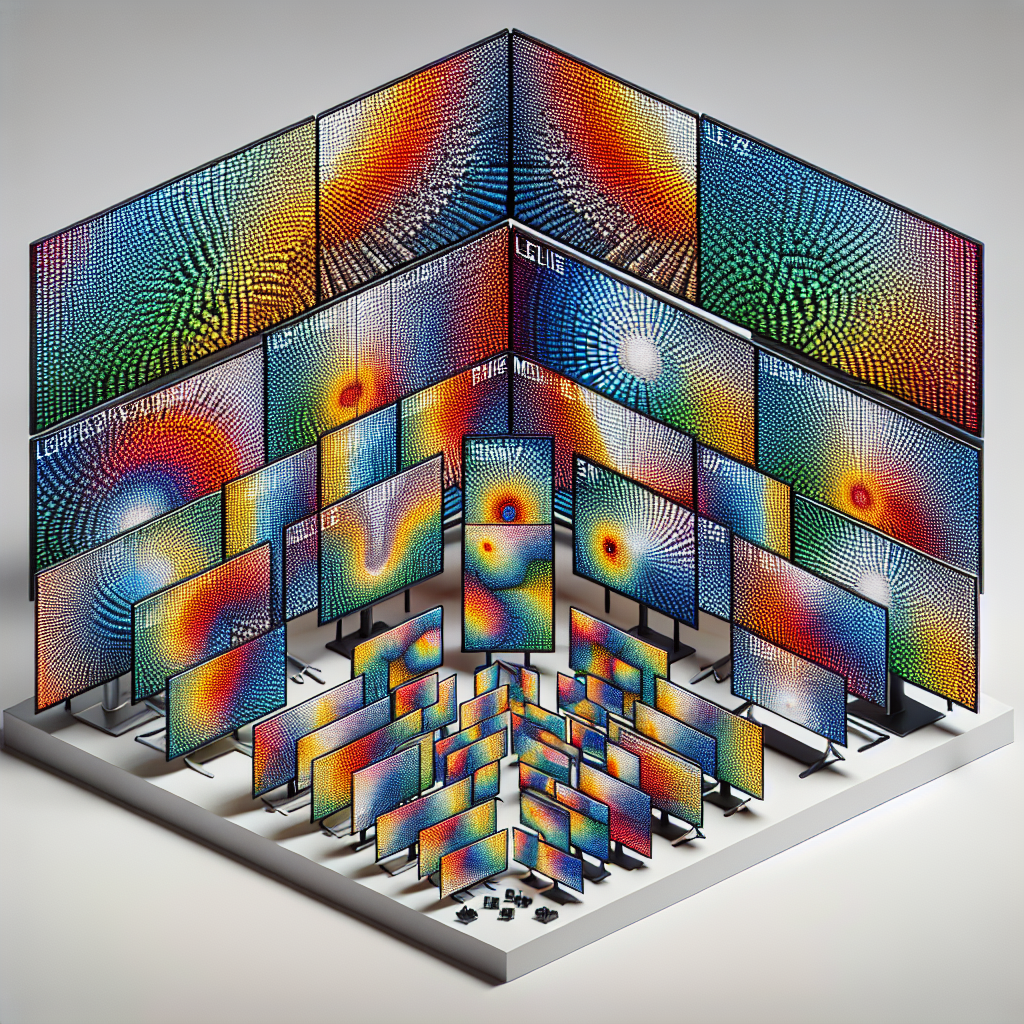The market for LED monitors is constantly evolving, with new technologies and features being introduced regularly. One of the most significant factors to consider when purchasing an LED monitor is its resolution. Resolution impacts not only the clarity and detail of the display but also influences the overall user experience. In this article, we will explore the different resolutions available in LED monitors, helping you make an informed decision for your next purchase.
What is Screen Resolution?
Screen resolution refers to the number of pixels displayed on the screen, both horizontally and vertically. The higher the number of pixels, the better the clarity and detail of the image. For instance, a resolution of 1920 x 1080 means there are 1920 pixels horizontally and 1080 pixels vertically.
Table of Common Screen Resolutions
| Resolution | Common Name | Pixel Count | Aspect Ratio |
|---|---|---|---|
| 1280 x 720 | HD | 921,600 | 16:9 |
| 1920 x 1080 | Full HD | 2,073,600 | 16:9 |
| 2560 x 1440 | QHD / 2K | 3,686,400 | 16:9 |
| 3840 x 2160 | UHD / 4K | 8,294,400 | 16:9 |
| 7680 x 4320 | 8K | 33,177,600 | 16:9 |
HD (1280 x 720)
HD, or High Definition, is one of the most basic resolutions available in LED monitors. It is widely used in budget-friendly monitors and is sufficient for general computing tasks and casual multimedia consumption. Although it lacks the sharpness and detail of higher resolutions, HD is more than adequate for smaller screens and provides a decent viewing experience.
Full HD (1920 x 1080)
Full HD, also known as 1080p, is one of the most popular resolutions due to its excellent balance between quality and cost. Full HD monitors are widely used for a variety of applications including gaming, content creation, and general office tasks. The resolution provides a significant improvement over HD, offering better clarity, crispness, and detail, especially on larger screens.
QHD / 2K (2560 x 1440)
QHD, or Quad High Definition, has become increasingly popular, especially among gamers and professionals. Known as 1440p or 2K, QHD resolution offers four times the pixel count of HD, resulting in sharper images and more detail. This resolution is ideal for larger screens and provides a superior viewing experience for high-quality content, gaming, and multitasking.
UHD / 4K (3840 x 2160)
Ultra High Definition, or 4K, is the next step up from QHD, offering an astounding level of detail and clarity. With four times the pixel count of Full HD, 4K monitors are perfect for professional applications such as video editing, graphic design, and gaming. These monitors provide extraordinary levels of detail and are capable of displaying content in stunning, life-like quality.
8K (7680 x 4320)
8K resolution represents the pinnacle of current display technology, offering unparalleled levels of detail and clarity. With sixteen times the pixel count of Full HD and four times that of 4K, 8K monitors are designed for extremely high-end professional applications. These monitors are still relatively rare and expensive, but they provide an exceptional viewing experience that is unmatched by any other resolution.
Which Resolution Should You Choose?
Choosing the right resolution depends on your specific needs and the tasks you intend to perform. Here are some considerations:
- General Use: For basic tasks like web browsing, document editing, and casual media consumption, HD or Full HD monitors are more than sufficient.
- Gaming: Gamers often benefit from higher resolutions such as QHD or 4K for a more immersive experience. However, it’s important to ensure that your hardware can support these resolutions.
- Professional Work: For tasks like video editing, graphic design, and detailed creative work, higher resolutions such as 4K or 8K are recommended to achieve the utmost clarity and precision.
Ultimately, the right resolution for you will depend on your budget, the size of the monitor, and the intended use. Higher resolutions provide better image quality but come at a higher cost and may require more powerful hardware.
Future Trends in Monitor Resolutions
The future of monitor resolutions looks promising with ongoing advancements in display technology. Manufacturers continue to push the boundaries with higher resolutions and better image quality. As technology evolves, we can expect improved accessibility and affordability of high-resolution monitors, making them available to a broader audience.
Emerging technologies such as OLED and MicroLED displays are also set to revolutionize the industry by offering even better contrast ratios, color accuracy, and overall viewing experiences. These advancements will likely make higher resolutions the norm rather than the exception in the coming years.
Conclusion
Understanding the different resolutions available in LED monitors is crucial for making an informed purchase. From basic HD to cutting-edge 8K displays, each resolution offers unique advantages and is suitable for different applications. By considering your specific needs, budget, and hardware capabilities, you can select the best resolution to enhance your viewing experience.
As technology continues to advance, we can look forward to even more impressive displays, bringing unprecedented levels of detail, clarity, and immersion to our screens.

